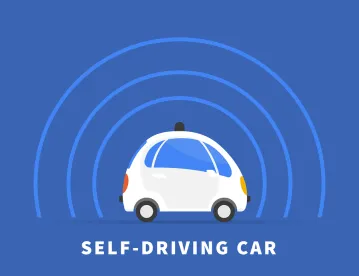Summary
The US Department of Transportation’s National Highway Traffic Safety Administration recently released A Vision for Safety 2.0, an update to its prior guidance on automated driving systems. The new guidance adopts a voluntary, flexible approach to regulation of automated driving systems and clarifies that it alone, and not the states, is responsible for regulating the safety design and performance aspects of such systems.
In Depth
On September 12, 2017, the US Department of Transportation’s National Highway Traffic Safety Administration (NHTSA) released A Vision for Safety 2.0, an update to the voluntary guidance for automated and self-driving vehicles (Automated Driving Systems or ADSs) released by the Obama administration in September of last year.
A Vision for Safety 2.0 focuses on the highest levels of vehicle automation, levels 3-5 as defined by SAE International, which include systems with no-to-minimal human interaction or performance of driving-related tasks. Unlike the previous guidance, A Vision for Safety 2.0 does not discuss any planned regulatory actions or enforcement tools, nor does it mention NHTSA’s pre-market approval authority as a potential tool to regulate the safety of ADSs. Rather, the guidance encourages the development of automated vehicle technology and offers a “nonregulatory,” voluntary and flexible approach to ADS safety.
The guidance is divided into two sections. The first offers voluntary guidelines for the ADS industry in designing best practices for testing and deployment of ADSs. The second clarifies federal and state roles in the regulation of ADSs and provides state legislatures with suggestions for developing best practices on how to safely foster the development and introduction of ADS technologies onto public roads.
To support the industry in developing best practices in the design, development, testing and deployment of automated vehicle technologies, NHTSA offers suggestions on 12 priority safety design elements:
-
System Safety: NHTSA encourages industry to adopt and follow standards in safety, including those from standards-developing organizations and to document the safety design process.
-
Operational Design Domain (ODD): NHTSA encourages industry to define the ODD for each vehicle’s ADS and document the assessment, testing and validation procedure. An ODD defines where (such as roadway types and speeds) and when (day/night, weather limits, etc.) an ADS is designed to operate.
-
Object and Event Detection and Response (OEDR): OEDR refers to detection of unexpected circumstances relevant to driving, such as pedestrians, bicyclists, animals and objects. NHTSA encourages industry to have a documented process for assessment, testing and validation of an ADS’s OEDR capabilities.
-
Fallback: NHTSA encourages industry to have a documented process for transitioning to a “minimal risk condition” where it cannot do any harm when a problem is encountered or the ADS cannot operate safely.
-
Validation Methods: Given the variety of automation functions, NHTSA encourages industry to develop methods to mitigate safety risks associated with their ADS approach. Industry should continue to work with NHTSA and standards organizations to develop and update safety tests.
-
Human Machine Interface: NHTSA encourages industry to consider whether driver engagement monitoring is necessary. An ADS should be capable of informing the human operator or occupant whether the ADS is properly functioning.
-
Vehicle Cybersecurity: NHTSA encourages industry to follow established best practices and design principles for cybersecurity and to consider and incorporate guidance from a variety of standards setting organizations.
-
Crashworthiness: NHTSA encourages industry to consider how best to protect vehicle occupants and to include information from advanced sensing technologies into new occupant protection systems.
-
Post-Crash ADS Behavior: NHTSA encourages industry to consider methods of returning an ADS to a safe state after being involved in a crash, such as shutting off the fuel pump and disengaging electrical power.
-
Data Recording: NHTSA encourages industry to establish a process for testing, validating and collecting data related to malfunctions, degradations or failures. Data gathered from crashes should be used to update standards as well as for crash reconstruction purposes.
-
Consumer Education and Training: NHTSA encourages industry to develop dealer, distributor and consumer education and training programs on the safe use and operation of ADSs.
-
Federal, State and Local Laws: NHTSA encourages industry to document how they intend to account for all applicable federal, state and local laws in the design of their vehicles and ADSs.
In addition to these safety design elements, NHTSA encourages industry participants to perform Voluntary Safety Self-Assessments that demonstrate their approach to testing and deployment. Voluntary Safety Self-Assessments are intended to build public trust in ADSs and encourage the establishment of industry safety norms. NHTSA envisions that the Voluntary Safety Self-Assessments will provide information on how the industry is using NHTSA’s voluntary guidance or their own processes to address safety concerns. NHTSA’s guidance does not require companies to file safety assessments with NHTSA, nor will they need the agency to sign off on a safety assessment prior to testing of new ADSs. Using the Voluntary Safety Self-Assessments, NHTSA plans to regularly update its guidance “to reflect lessons learned, new data, and stakeholder input as technology continues to be developed and refined.”
In addressing state legislatures, NHTSA clarifies that it alone is responsible for regulating the safety design and performance aspects of motor vehicles while states are responsible for regulating the human driver and vehicle operations. In its regulation of these aspects of ADSs, the guidelines encourage states to: (1) provide a “technology-neutral” environment, (2) provide licensing and registration procedures for automobiles that include ADSs, (3) monitor safe ADS operation through reporting and communication mechanisms to public safety organizations, and (4) review traffic laws that may serve as barriers to operation of ADSs.
In conjunction with NHTSA’s guidance, Congress is working to develop policies for autonomous vehicles and is currently considering the “SELF DRIVE Act,” which passed in the House on September 6, 2017. The bill requires the NHTSA to regulate the safety of autonomous vehicles, requires autonomous vehicle manufacturers to develop cybersecurity plans and expands federal preemption of state authority regarding autonomous vehicles. The bill would prohibit state and local governments from legislating in the areas of design, construction or performance of “highly automated vehicles, automated driving systems, or components of automated driving systems” beyond traditional state-regulated areas like registration, licensing, insurance and traffic laws. The Senate is expected to consider a companion bill soon.





 />i
/>i

